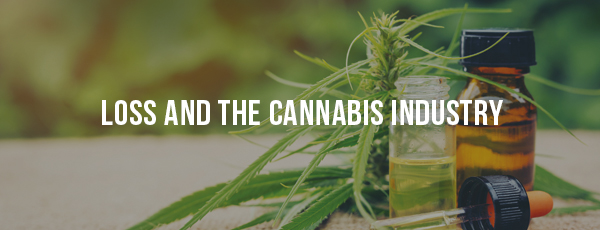Loss and the Cannabis Industry: Layers of Risk

Emerging markets tend to fall into that riskiest of strategic planning quadrants: Unknown-Unknown territory. They bring with them both tremendous opportunity and enormous risk.
The cannabis industry is one such market.
While medicinal marijuana has been legal in Canada since 2001, and in select states in the U.S. since 1996, only recently has cannabis transitioned into a full-blown commercial enterprise in both countries.
We spoke with Joe Scarlato, President of Emerging Markets & Technology R&D at Lowers Risk Group, to understand just what risks the cannabis industry poses.
Layer by Layer, the Risks Add Up
Understanding risk is an important first step for any business to take to mitigate the possibility of loss. Risks in the cannabis industry run the gamut from catastrophic loss, business interruption, physical security, and cyber losses to a changing regulatory environment.
Cannabis facilities generally fall into one of three different business models which provide a rough framework for understanding their associated risks.
Grow Only Facilities
Facilities that focus on growing plants or producing their distillates have the most clear-cut risk: the catastrophic loss of their plants. Without plants, the business has no raw materials with which to manufacture its products. It can’t sell the cannabis or its distillates (i.e., concentrates such as raw hemp, flour, CBD oil, THC oil that is separated from the cannabis plant matter through a refinement process).
Integrated Facilities
Many cannabis facilities grow the plant and do wholesale operations, for example producing packaged flours, vapes, or edibles. The products then go straight to distribution to dispensaries or retail channels through a regional product distributor.
Here both the plants and the packaging processes represent the largest areas of financial risk. The facility itself could have a catastrophic event, such as a fire. Not only are the plants lost, but the business must re-tool its original packaging machinery to return to full operations. Or, the dispensary industry might encounter a regulatory shift that prevents them from continuing to use the business’s product.
“Massachusetts just banned vapes from being distributed to dispensaries in the state. So, if you’re a vape producer, and all of sudden you have no one to sell vapes to, your entire distribution network gets taken away from beneath you,” says Scarlato.
These added risks introduce the need for expanded business interruption or contingent business impact coverage.
Vertically-Integrated Facilities
At the highest level of complexity are facilities that integrate multiple aspects of manufacturing and distribution. They grow, process, package, distribute, and sell products, increasing value every step of the way. “As you add more integration, you add in more perils that could impact the bottom line,” notes Scarlato.
A Sampling of Added Risk:
- Trucking distribution (e.g., accidents, delays, explosions)
- Product recalls (e.g, tainted flour)
- Regulatory changes (e.g., shifts in state or federal laws)
- Catastrophic loss (e.g., theft, drought, plant disease)
- Product liability (e.g., THC oil used in vapes)
- Property damage (e.g., for each facility)
- Personal liability, auto insurance, crop insurance
Fully-integrated verticals like these pose an extremely complex insurance program and aggravated financial risks. These businesses have the most to lose.
The Role of Regulatory Compliance
Cannabis facilities in both Canada and the U.S. have another level of risk to navigate: changing laws. One area where this can be seen is in licensing. Right now, cannabis operations in California predominantly use temporary licensing. Many Canadian dispensaries buy products from these U.S.-based manufacturers.
So, if there’s a dispensary in Canada buying their flour from a farm in a California facility that’s working under a temporary license, and the State of California decides tomorrow to have a cessation date for all temporary licenses, it creates a real problem. Even if the California grower qualifies for the permanent license, they’re likely going to be out of flour for a couple of weeks as they go through the certification process. That leaves the Canadian company holding the (empty) bag.
Many of Canada’s publicly-traded cannabis companies look to the U.S. to buy up privately-held facilities, yet the risk of having a licensing problem in the U.S. potentially impacts their Canadian license. Because of these regulatory concerns, Canadian companies are shying away from such investments.
Now, add in the multitude of other regulatory bodies that oversee the industry – the United States FDA, state product safety boards, the U.S. federal bank – and the complexity is exponentially amplified.
“The logistics in cannabis are challenging to understand, which is one of the reasons insurance is so difficult,” explains Scarlato.
Assessing Risks
In order to avoid the perils of operating in the cannabis sector, the risk solutions team at Lowers Risk Group can help businesses assess potential risk – from security to business processes, to supply chain logistics. We’ll help you create a strong business continuity plan that will minimize the financial impact of these vulnerabilities. Please contact us if you’d like to get started.